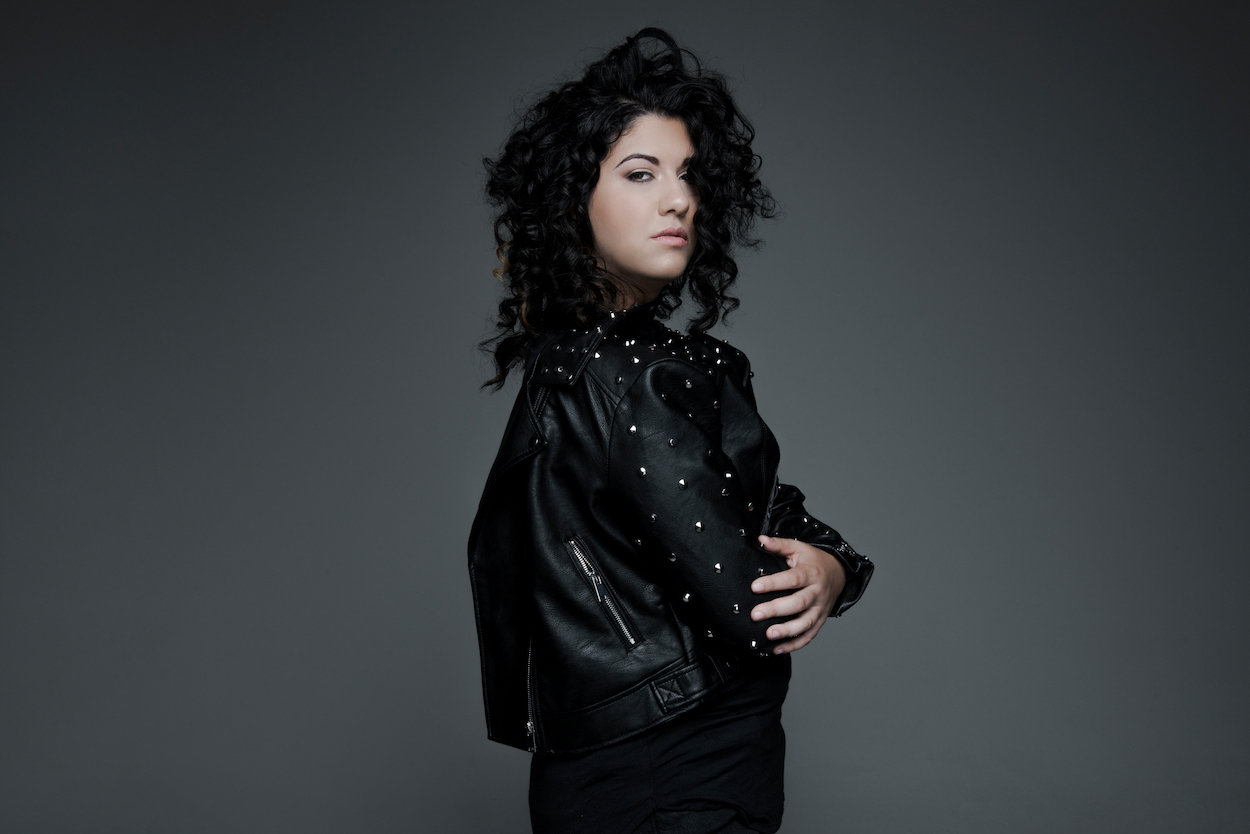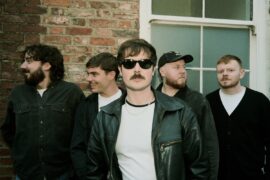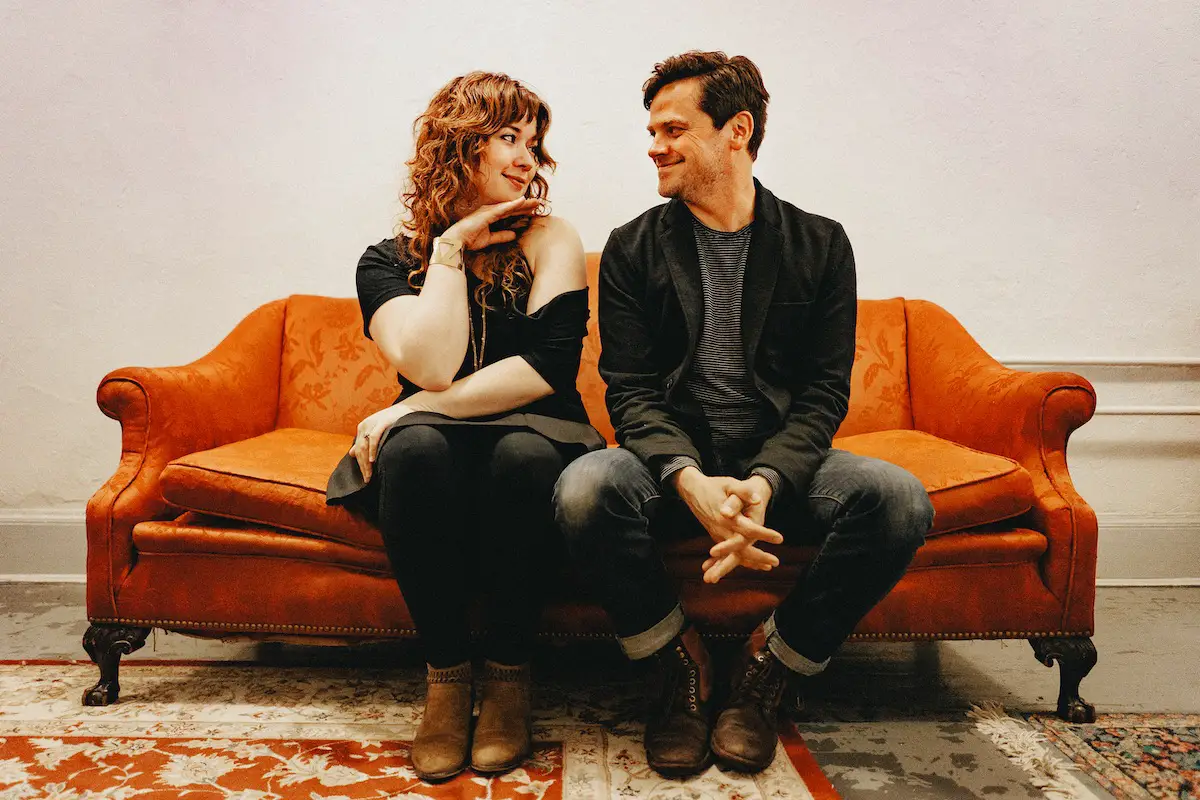Singer/songwriter Hannah Frances’ fifth album ‘Keeper of the Shepherd’ is a narratively-dense exploration of the cycles of grief and the search to find yourself.
by guest writer Kristian Burt
Stream: ‘Keeper of the Shepherd’ – Hannah Frances
Staring out at the lush Vermont landscape caked in feet of snow — singer-songwriter, guitarist, composer, and visual artist Hannah Frances reflects on her narratively-rich fifth record, Keeper of the Shepherd.
As we talked, Frances had recently reached the one-month anniversary since the album’s release. “It feels like it just came out, it’s surreal,” she tells Atwood Magazine.
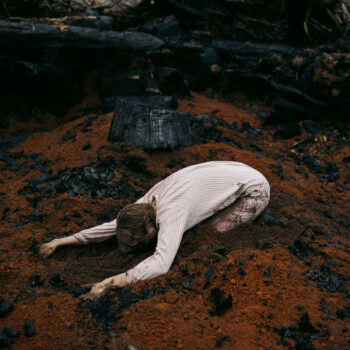
Keeper of the Shepherd follows up her 2021 record, Bedrock, and Frances continues to develop the core of her sound, hone down her virtuosic abilities on the guitar, and search every corner of her mind and soul. “I’m making art that makes my inner child so overjoyed because we’re doing it all,” she says, laughing. “I want to do it all so let’s just do it all. I’m such a shapeshifter and want to become even more so as I get older.”
The record is only seven-tracks long, but one listen through will feel like a lifelong journey battling the relentless seasons of grief. It’s a record that is just as dense with emotion as it is expansive in its exploration of how to navigate grief.
“It’s so warm inside, there’s a fire going, there’s wood, there’s trees,” she says about her surroundings as we talk. “There’s so much juxtaposition that we can find, because the land has everything. As someone who has grown up in Pennsylvania and experienced all the seasons, my whole life I’ve loved the shifting seasons. That plays a huge role in my writing, moving through cycles.”
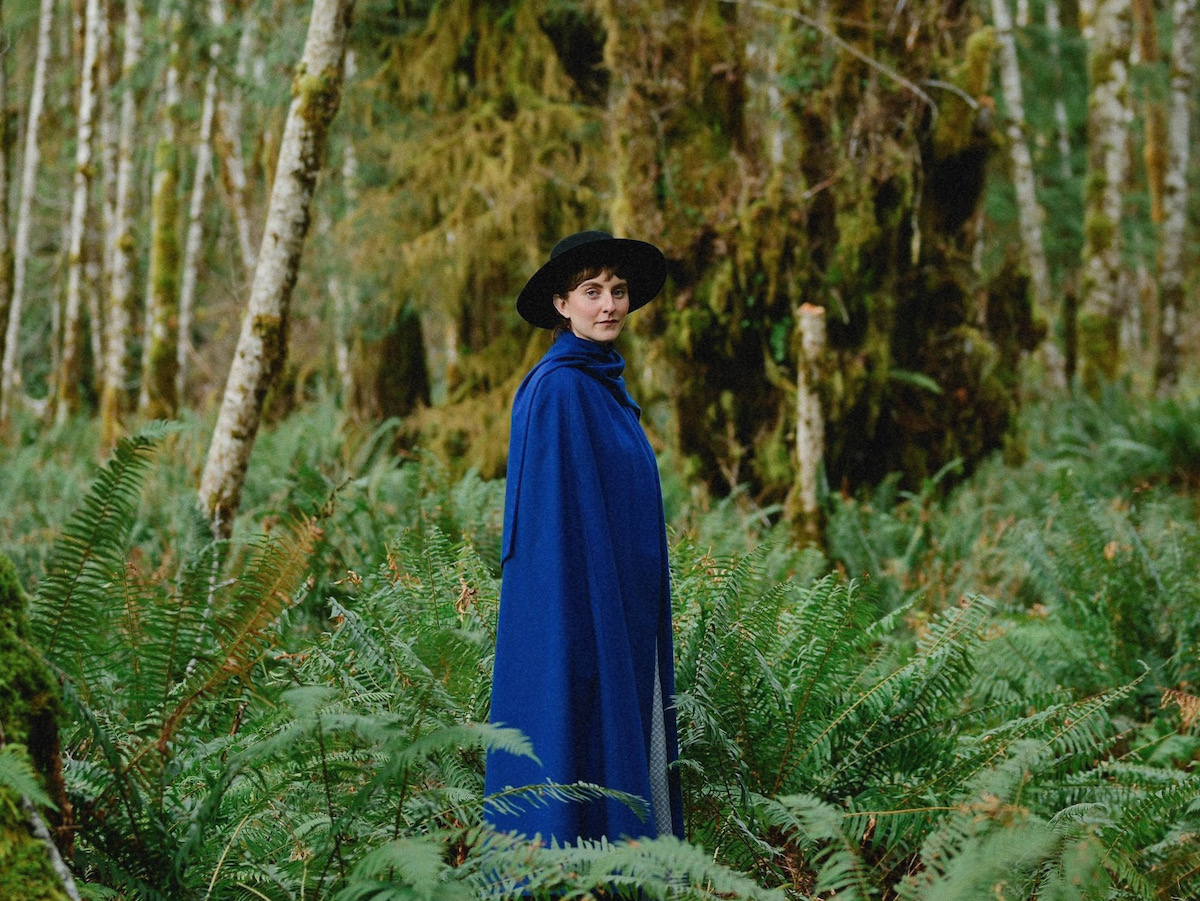
Frances found the process of making Keeper deeply cathartic.
Her father had passed away not long before she began working on the opening track, “Bronwyn,” and she reached a point in her battle with grief where she felt as though she could never go back to music again. It took eight months of long, introspective work, but Frances was able to find her way back to what was so core to her, and she ran with her newfound hopefulness.
“I literally think ‘Bronwyn’ rewired something in me,” she says. “And then I started to feel so much more inspired by music and inspired by what was next for myself.”
After working on “Bronwyn,” she left her apartment in Chicago, stayed with her bestfriend’s family in Vermont, wrote “Floodplain,” and toured the country before returning to Vermont to finish the rest of the record.
Just as “Bronwyn” took months for Frances to create, the song lives in Keeper as a true testament to the never-ending, yet ever-fluctuating, pain of losing somebody so core to your being. It lays the foundation for the rest of the record — the tender healing in “Woolgathering” and hopefulness found in “Haunted Landscape, Echoing Cave” call back to “Bronwyn” just as healing from grief will always be accompanied by the part of you that’s gone.
“It started off really slowly, and then things started just coming to me,” Frances says. “It felt like a prayer in a way. I was talking, praying to myself, or someone outside of myself. ‘Bronwyn,’ I guess, just represents myself. I feel like I was just talking to myself.”
“You can hear it in that song as I’m scraping the ground to get up,” she says referring to the length of time it took to make “Bronwyn.” “It’s this hard, arduous journey, and you’re lost and you’re dizzy. The whole song kind of turns you around and around, and then you’re just off to the races.”
After “Bronwyn” and “Floodplain,” she wrote the other five songs within two weeks and recorded the entire record in around a week, “It was just like wildfire,” she says. From “Woolgathering” to “Vacant Intimacies,” lyrics erupt with emotion like a river after breaking through a dam.
Aside from the track directly in the middle of the record, “Floodplain,” Frances ordered each song to when she wrote them — which allowed her to rummage through the farthest corners of her creativity while producing a record that keeps a consistent flow to it.
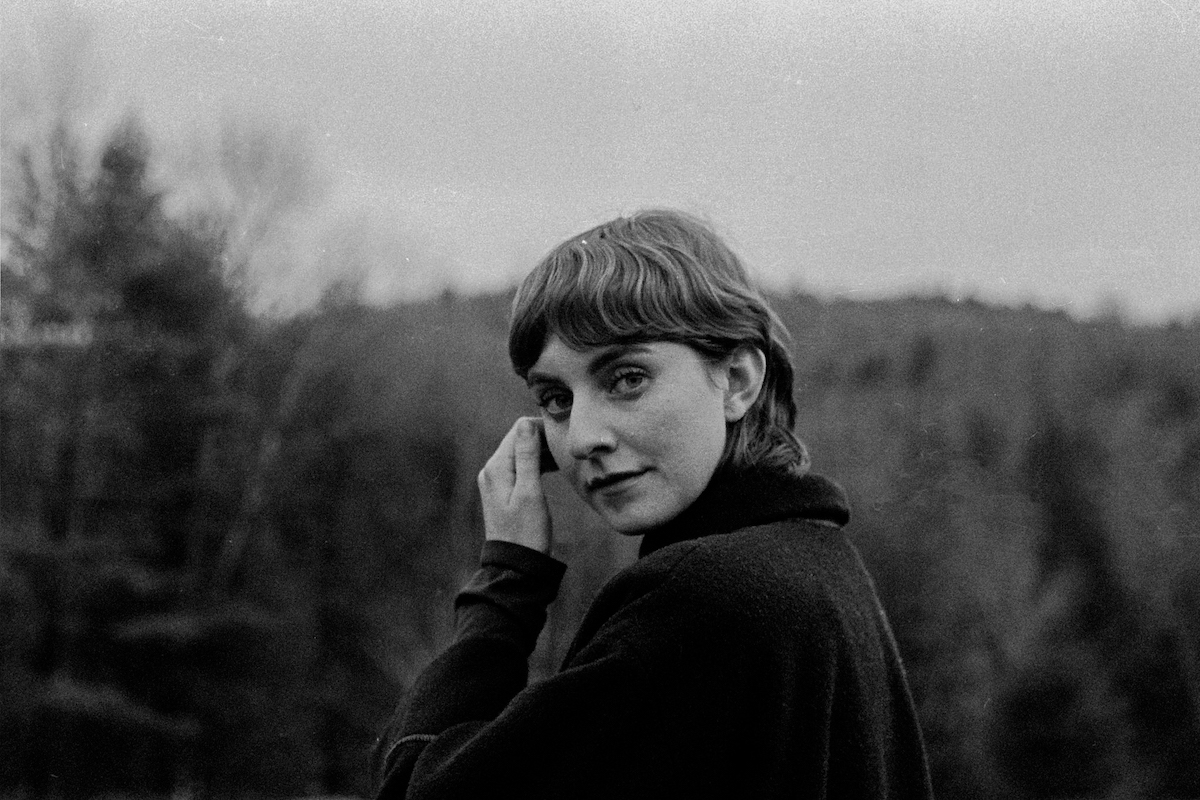
Frances, who has been an interdisciplinary artist since she was a child, looked to incorporate many different mediums into the record.
“Husk” is a classical, gut-wrenching meditation on the lifelong relationship one has with death, a song which she says is “almost like a funeral march song.”
death sings
leaves lilting the light
death is a thread
measuring time
burning a candle
guiding a life
to be alive
i am
decaying within me
without me
i am an elegy
memory echoing
death is a husk
holding the shape of my life
In the song’s video, Frances is shown in a dark forest, moving through an interpretive dance which she flows her emotions through and embodies the slow churning that grief can feel like, the constant reminder of death, and the feeling as though you’ve lost control over your body. “‘Husk’ is definitely the slowest and deepest trench in the album, and because I have such a relationship with my body and movement that I was like, ‘How can I move to this? What is the pulse of this song?’” she says.
Despite that Frances says the name for Keeper of the Shepherd came to her in an almost divine moment, she truly does take care of a herd of sheep.
“I’m just so inspired by sheep, I think they’re magical,” she says while reflecting about how her life in Vermont inspired many aspects of the record. “I’m inspired by birch trees that peel, and moss is the most beautiful thing I could imagine. I’m truly baffled by the land.”
Components of Vermont’s landscape are ripe throughout the record. In the video for the album’s title track, Frances runs through the moss-ridden forest and up the rocky beaches of a river. She’s wandering around aimlessly, trudging through damp fields in the hopes of finding everyone she lost, including herself.
i cannot love you without me
i cannot live without me
i cannot be kept without me
i cannot be without me
i hold to my father’s
heart dying in my arms
i died too, i died too
i lost you, i lost me within you
With wide-ranging influences including Jeff Buckley, Nick Drake, Fiona Apple, Radiohead, Joni Mitchell, King Crimson, and Grizzly Bear, Frances says she’s invigorated by the prospects of bending genres and expanding the restrictions that come with categorizing musicians. “There’s so much freedom and there’s so much limitation in genre and trying to classify an artist or an album as one thing, and it’s just not that,” she says. “It’s so full of multitudes.”
Keeper of the Shepherd is a record that truly pushes the boundaries of genre, moving from folk tunes to more classical choral moments, all with jazz-influences throughout and a sax solo to close the record.
“You could call her music freak folk, but it’s really more monumental than most freak folk … it’s very mythic,” NPR’s Ann Powers said about Keeper of the Shepherd on “All Songs Considered.” Frances says she, along with any female musician, can often be pigeonholed or reduced to only their voice and lyricism, instead of being seen as a full-package artist.
“There’s this inability for the larger trope of music listeners to be able to comprehend that a woman can be a really strong singer and a really strong guitarist,” she says. “There’s this need as a woman in music that is predominantly dominated by men in lots of these different genres to be like, ‘Oh, but I can and I will. I will expand upon what you think a female folk singer songwriter is supposed to do. I will prove to you and shock you.’”
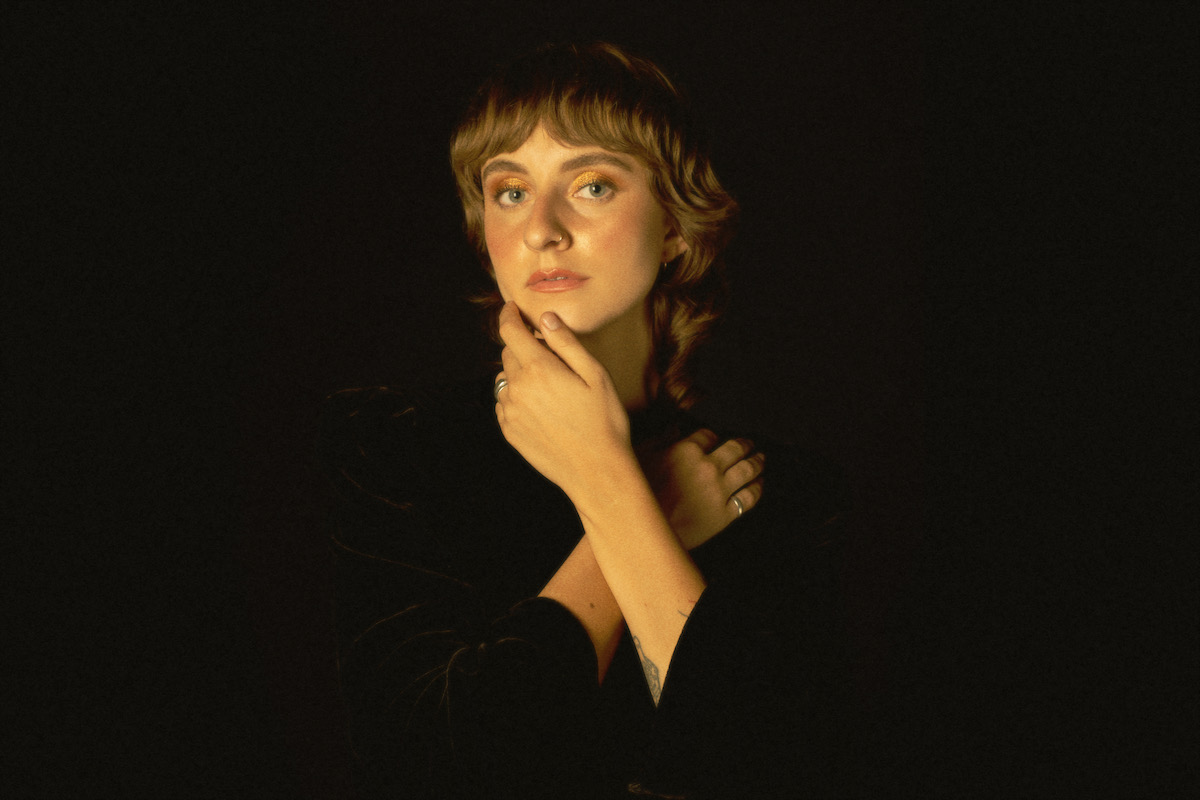
Keeper of the Shepherd is an embodiment of who Frances is as an entire being, packed full with all her stories, ideas, wants, dreams, fears.
Referencing Jeff Buckley and Fiona Apple, she says she wants to pour out into each song in a way that feels so authentically personal while leaving space for anybody listening to form their own relationship with it. “I want my music to be of use, and if it can be of service to you, finding something deeper in yourself and feeling witnessed, then I’ve done my job,” she says.
“I’m obviously a very emotional person,” Frances says after we finished a long tangent about growing up next to unkempt roads in the Northeast. We both remember how long it would take for roadkill to be removed, the weeks in which we, as kids, would watch a deer carcass be slowly picked away at by crows and turn to a pile of bones. “That was my first encounter with death … I still blow a kiss to every deer I see on the side of the road,” she adds.
That imagery rang in Frances’ head as the record flowed out of her. A few weeks can feel like an eternity for a seven year old, and that constant reminder of a life’s cycle felt just as raw to her now as it did back then. The cover art for the album shows Frances on her knees as though she’s praying, dug into orange dirt and the ashes from a scorched tree. She’s giving in to the earth, perhaps even the crows, hoping for a new life to rise up like a phoenix. You can’t reverse the cycle of life — if you want to find yourself again, you have to first give in to the ebb and flow of what’s ahead.
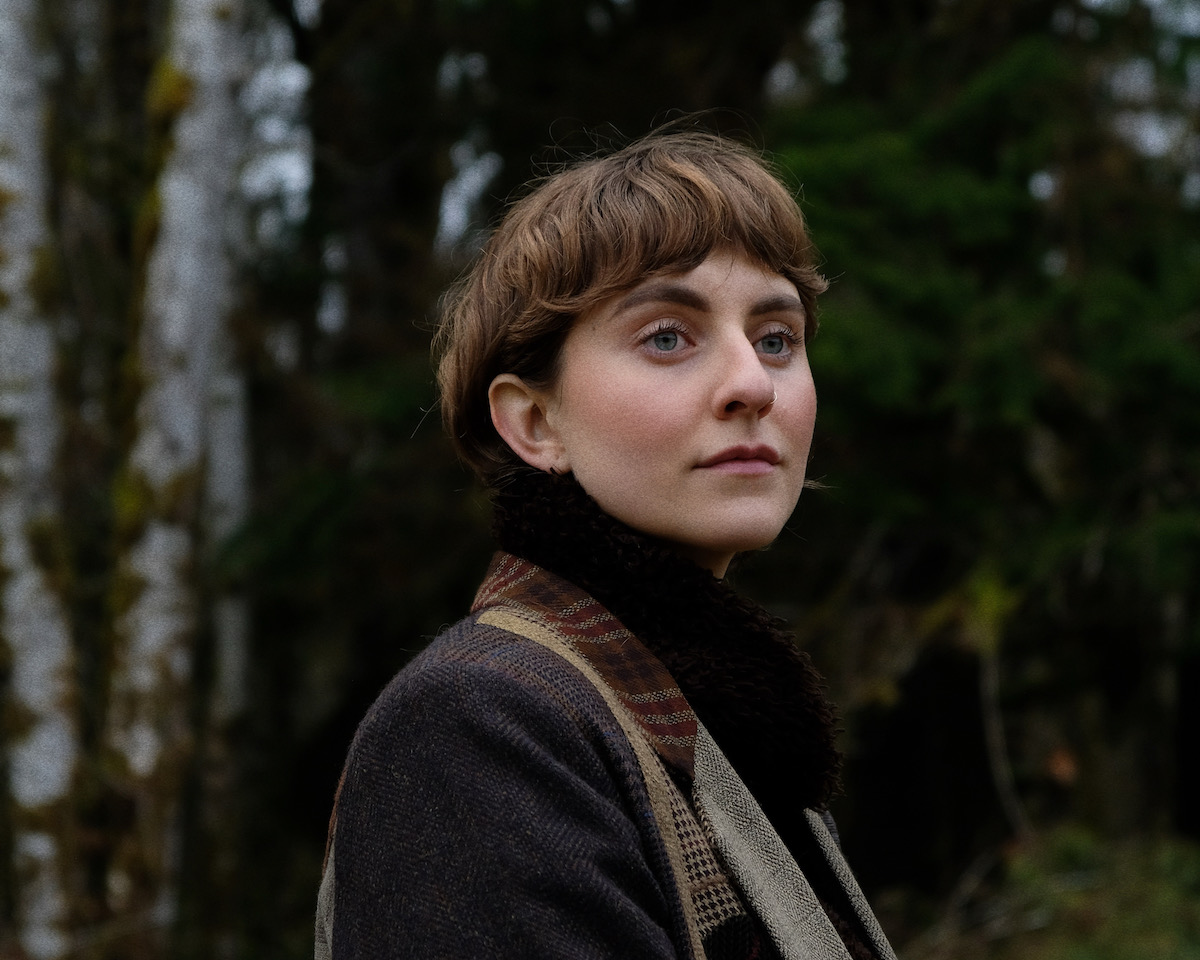
One of the most prominent through-lines in the record is to open up the body, “loosen the ribs,” and free yourself by surrendering. Just as “Bronwyn” acts as the foundation, “Haunted Landscape, Echoing Cave” summarizes the record as though Frances wrote an 80-page thesis. The track is a true bookend, encapsulating the finale to one cycle of how Frances dealt with her grief and what happens after you open up your chest to the Earth.
birthed by returning to the ruins, the shelter gone
unearthed by learning how to live through it
shaped by the hollow
black crows circling
the deer in buckthorn decayed and torn
the snake in the riverbed shedding form
the bones grow through the
haunted landscape echoing cave
“The only thing I can think of is just that I am released,” she says about finishing the album. “I just feel released from the underbelly of processing my trauma. A lot of it was ancestral, this place that I was born into.”
By the end of “Haunted Landscape, Echoing Cave,” Frances has found her way out of the cave and looks out to the landscape in front of her. A sprawling saxophone solo accompanies her as she takes one step forward. She knows winter could soon come again, but, for now, the sun is coming up and she’s made it back to her sheep.
— —
Kristian Burt is a Brooklyn-based arts, culture, and technology journalist, always searching for new ways to write about his recent favorite film, record, or internet subculture. You can contact him at kristianjburt@gmail.com.
— —
:: stream/purchase Keeper of the Shepherd here ::
:: connect with Hannah Frances here ::
— —
— — — —
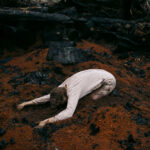
Connect to Hannah Frances on
Facebook, TikTok, Instagram
Discover new music on Atwood Magazine
© Gabrielle Greenberg
:: Stream Hannah Frances ::


 © Gabrielle Greenberg
© Gabrielle Greenberg